Mammillaria herrerae belong to the plant family cactaceae. They are native plants in Mexico and you could mostly spot them in growing semi desert areas there.
It is recognized as a species which is under threat due to habitat loss and illegal collection. These plants are regarded as one of the rarest plants.
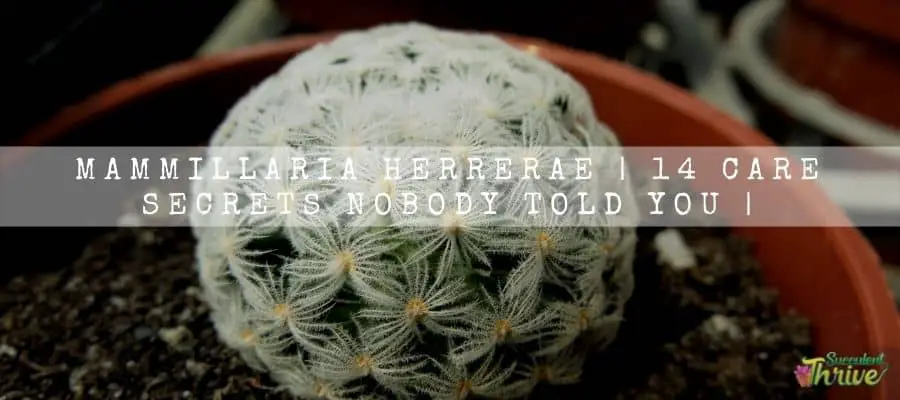
How do I identify a Mammillaria herrerae?
Mammillaria herrerae resembles a little golf ball. The most prominent feature you can use to identify this plant is its dense spination. The spines are white and help to protect the plant from its predators.
Other than protection the spines help plants to protect from harsh sun by creating a trapped air layer just before the plant surface.
This air layer protects the plant from harsh sun in summer and ice cold in winter.
Size
Their stems tend to take a globose or slightly elongated shape. It would be 2-3.5 cm in both diameter and in height as well.
Having said that, if you cultivate them, they would be about 8 cm in height without latex.
Growth rate
When you cultivate them, they tend to grow slowly. However, they usually form as solitary plants in their natural habitat.
Besides that, you could spot them form clusters at their base of the plant occasionally too.
One look care guide
| Botanical Name | Mammillaria herrerae |
| Common Name | Golf ball cactus |
| Plant Type | Cactus |
| Mature Size | 2-3.5 cm stem height and in diameter |
| Sun Exposure | Full sunlight |
| Soil Type | Well-draining |
| Soil pH | 6.1-6.5 |
| Bloom Time | April to may |
| Flower Color | pale pink to red violet |
| Hardiness Zones | 10a-11b |
| Native Area | Mexico |
| Toxicity | Non-Toxic |
| Average price | 20 USD – 25 USD |
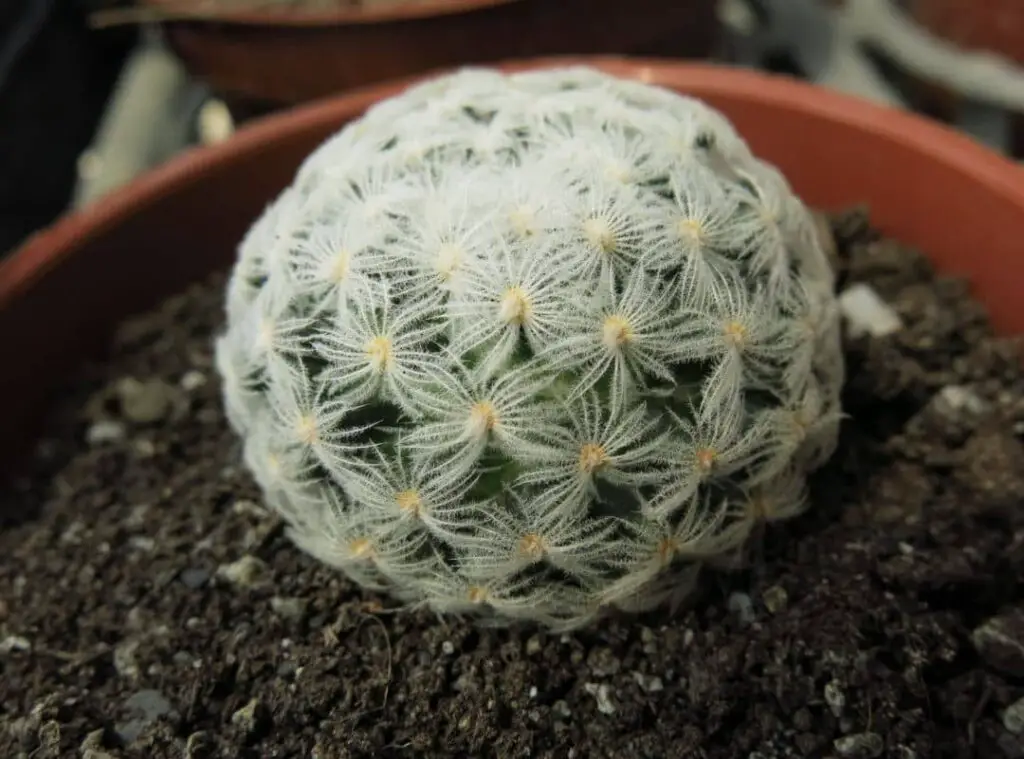
How do you take care of a Mammillaria herrerae?
In terms of taking care of these Mammillaria herrerae cactus, you need to mainly ensure that you keep watering them properly, fulfill their sunlight requirements, growing them in the right soil mix, etc.
If you are fulfilling these requirements, you will be rewarded with beautiful plants in return.
Light Requirement
When it comes to light requirements, they prefer to grow in full sunlight. It is very crucial that you expose the Mammillaria herrerae cactus for full sunlight since that will allow the plant to gain its full potential.
Consequently, the flowering of the Mammillaria herrerae cactus would also be benefitted from this.
Moreover, it is important that you provide them with very good ventilation as well. particularly if we consider the winter season, you need to be watchful in providing good ventilation.
Further strong light would be beneficial for heavy spine production.
Temperature and humidity
During the summer season, you need to provide shade from the sun since the temperatures would be high during this period.
Apart from that, you should provide good ventilation also when caring for them during summer.
Best temperature to grow Mammillaria herrerae cactus would be 20-25 degrees Celsius.
I would recommend shifting them indoors during winter so that you could protect the Mammillaria herrerae cactus from frosty situations which would be unhealthy for the plant.
Is it cold hardy?
Mammillaria herrerae cactus could tolerate a mild frost situation for some time. Having said that, if you expose them to such conditions for prolonged periods that would cause the deterioration of the plant.
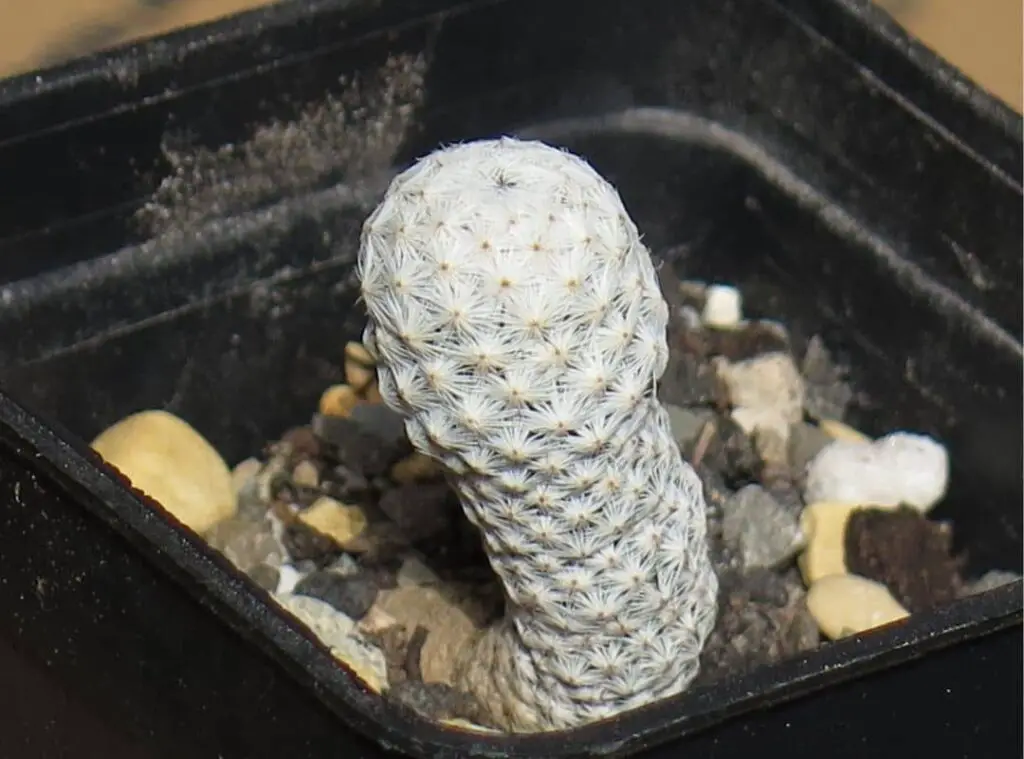
USDA Hardiness Zone
Mammillaria herrerae cactus would prefer to grow in USDA hardiness zones 10a-11b.
Watering Requirement
Mammillaria herrerae cactus are not fuzzy and have a minimum requirement when it comes to watering.
You simply have to first check whether the soil is dry and only then water. When you water, you need to do it thoroughly so that the growth of the plant would be benefitted.
In case if you feel like the soil is moist in condition, you need to wait for some time and only then water.
Ideally between two watering sessions, you should let the soil become completely dry. . That will be effective for the healthy growth of the plant.
Soil Requirement Type / pH
You should select a mineral well permeable substratum to grow these plants. I would recommend avoiding using peat or other humus sources in the potting medium.
What is more important is to provide a well-draining soil mix for them to grow well. refrain in using substances such as limestone as it will make the soil moderately acidic.
Flowering and Fragrance
Mammillaria herrerae cactus would produce flowers in pale pink to red violet. They would be quite large and diurnal shaped.
Apart from that the flowers would be 20-25 mm in length. It would be pleasing to watch them in full blossom.
You could expect them to flower in April to May. Furthermore, they have to be at least 5-7 years old and mature to produce flowers.
In addition to that, they would produce a fruit which is in white and small in size. They would consist of seeds which would be blackish brown in color.
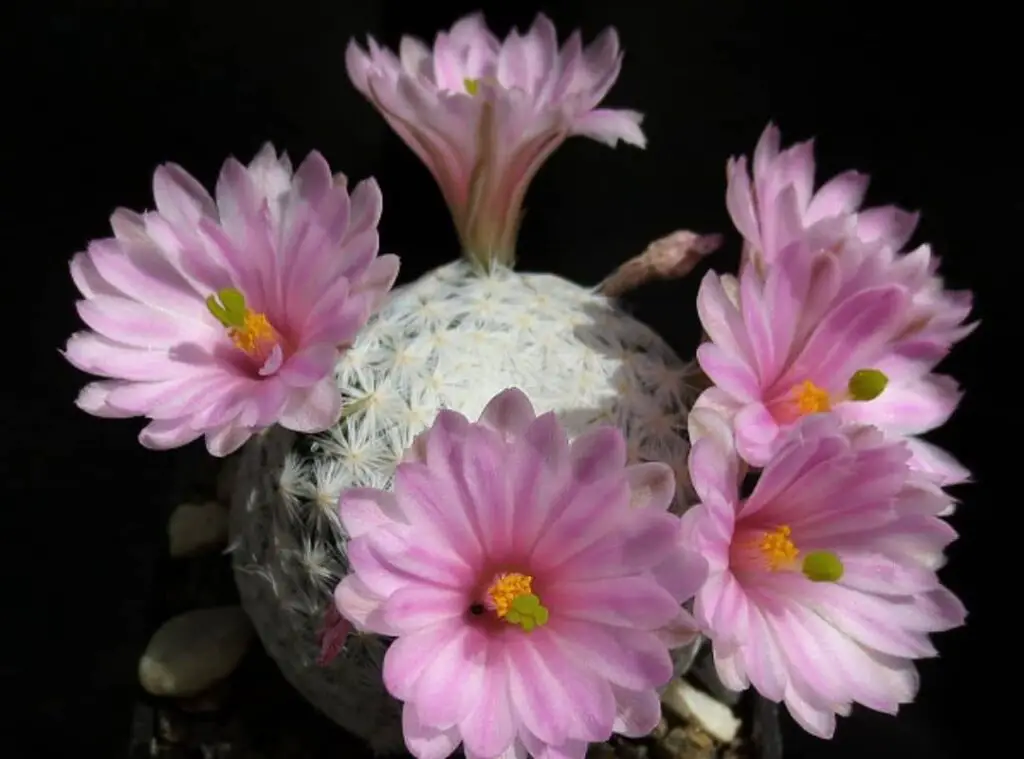
Pot size Potting and Repotting
You could consider repotting them once every two to three years. It is mandatory that you grow them in a very porous pot so that excess moisture would not retain in the pot.
Additionally, it has to have an adequate number of draining holes as well. unless it would lead to root rot of the Mammillaria herrerae cactus.
You could start repotting as follows,
First, water the plant so that you can take the plant out from the pot easily. It will in fact help to loosen up the soil in the pot.
Get hold of the pot firmly and try to take out the plant gently. When doing this, avoid pulling them from the trunk or from the branches.
If you cannot take it gently, consider cutting the soil loose from the pot edges. To do that you could use a knife.
Now you could prune the roots. You need to first get rid of the dead, damaged and moldy rotten root parts.
Consider that you have healthy roots and soil, then you should refrain from touching the root ball since it would cause stress in the plant.
If you wish to use the same pot to repot them, you could get rid of the old soil from the plant first and consider cutting about one quarter of the roots.
Consequently, it would allow the plants to stay fresh and healthy and it would allow the plant to live in the same pot for some more time.
You need to clean the pot properly so that it would be free from all fungus. Ideally you need to wash it properly with soap, rinse well and let it dry.
In case if you use an unclean pot, that will cause unnecessary problems such as fungal infections etc.
Add a layer of soil in the pot base. When you place the plant, you need to make sure that the root ball is placed a few inches under the edge of the pot.
In case, if you place it incorrectly, chances are that your pot will overflow with water when you water them.
Now you could add the plant in the soil mix. Make sure it is well established in the pot. After that you could add more soil. on another note you should plant it in the same depth as what it was before in the old pot too.
After that you could water the plant and make sure the excess water is running through the draining holes.
Where to Plant?
You need to plant in a place where it could gain adequate sunlight. If you wish to add it as an indoor plant, the best place to grow them would be in a windowsill.
Fertilizer and time of year
You could consider feeding them in their active growing season. When selecting a fertilizer, you could go for a fertilizer which is enriched with potassium and with phosphorus.
On the other hand, it must have a minimum amount of nitrogen too.
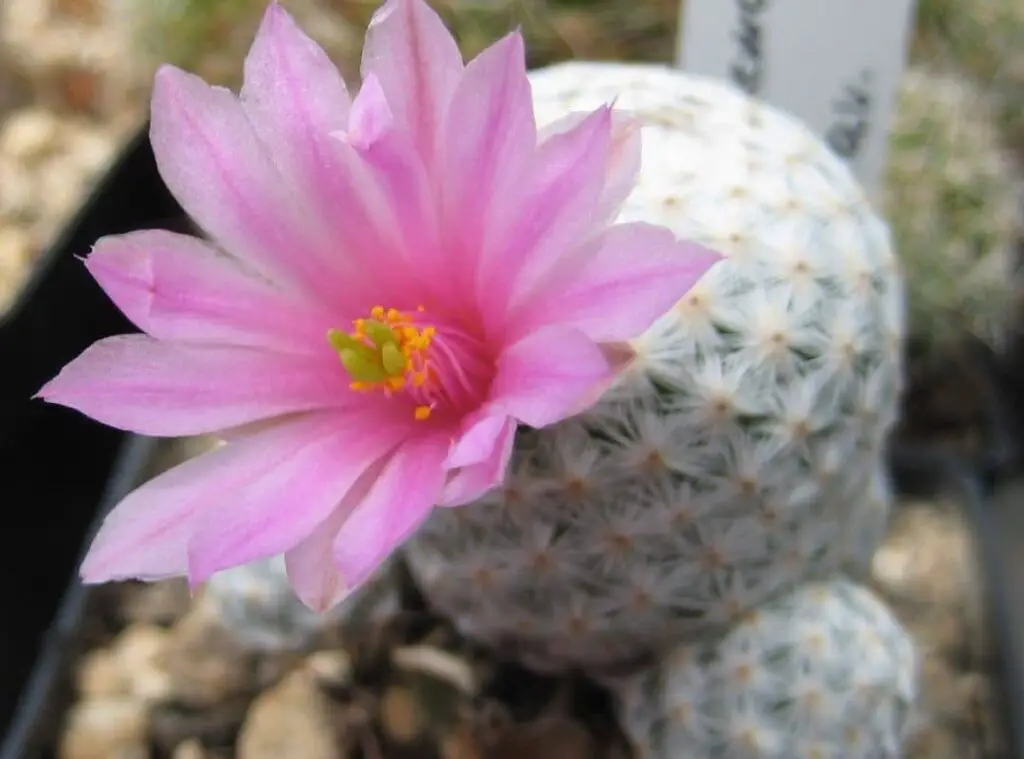
Dormancy
Mammillaria herrerae cactus plants go into dormancy during the winter season.
Can it be toxic to pets
Mammillaria herrerae cactus are non-toxic for pets.
Common bugs and Illness issues
You need to be watchful when handling these Mammillaria herrerae cactus since there would be a wide array of pests who would attack these plants.
For example, pests such as red spiders, mealybugs would be so dangerous and risky when growing them.
If we take red spiders for example, Mammillaria herrerae would be quite responsive to these red spiders. You could consider doing overhead watering to control these mites.
Next you would have to encounter mealybugs when growing the Mammillaria herrerae plants.
They could be so annoying as it would be difficult to spot them to your naked eye as they mainly tend to form underground on the roots.
Apart from the above, root rot would be another major disease you will go through when growing the Mammillaria herrerae cactus.
Over-watering and constant soggy conditions in the soil could cause this condition. It is very unlikely that you could save the plant if the root rot has occurred to a greater level.
In addition to that, snails could also create problems for these plants.
Special Care tips
If you provide them adequate sunlight and if you water them moderately, that would be more than enough for them to grow vigorously and healthily.
You will not have to make any great effort when caring for them. However, you need to keep in mind that you should avoid over-watering them.
In addition to that, always grow them in a well-draining soil mix too.
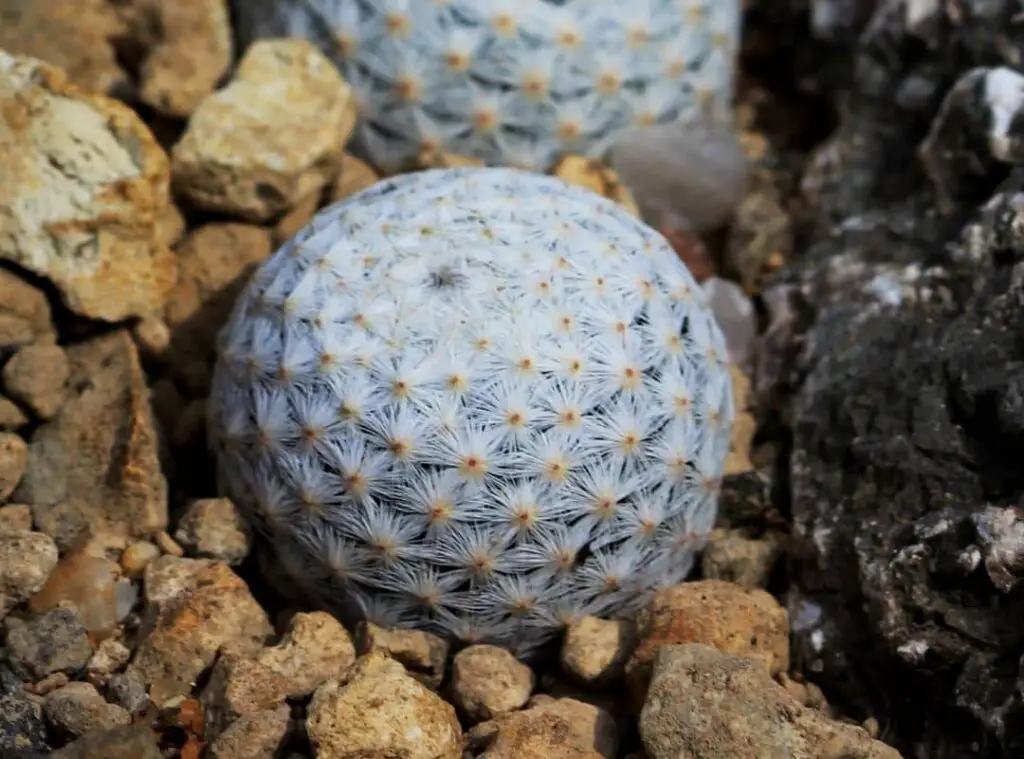
How do you propagate a Mammillaria herrerae?
You could use either seeds or a grafting method to propagate the Mammillaria herrerae cactus. These cacti do not form offsets in general.
If you take the seeds, their germination will take place within two to three weeks’ time during the spring season.
Refrain in distributing the seedlings before they root well. Once they have rooted well, you could plant them in small pots individually.
In fact, only a little number of seeds would be successful in germination. However, you could consider using the grafting method to boost the growth rate of Mammillaria herrerae cactus plants. Further, it would be effective in creating backups for plants in collection.
Read More about Mammillaria propagation
Pincushion Cactus Propagation Guide | 10 Minutes Quick Read |
Related questions
Is Mammillaria herrerae an indoor plant?
Yes, Mammillaria herrerae could grow as indoor plants.
Do Mammillaria herrerae need direct sunlight?
It does not necessarily have to be direct sunlight. Mammillaria herrerae would thrive well in full sunlight though.
Should I mist my Mammillaria herrerae?
I would encourage you to mist the Mammillaria herrerae occasionally.
Read More: Mammillaria Bombycina Succulent Care | 14 Secrets You Never Knew |
